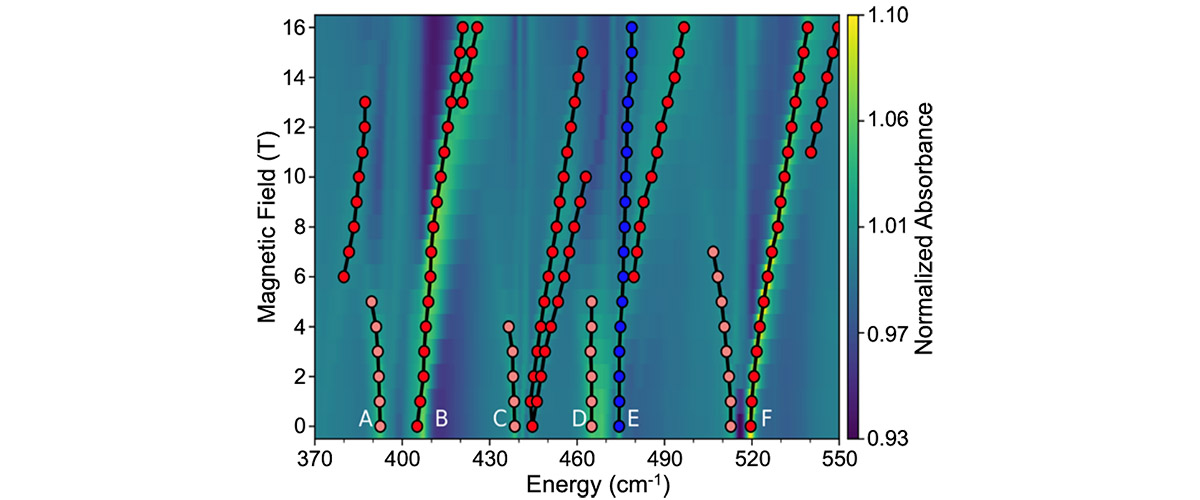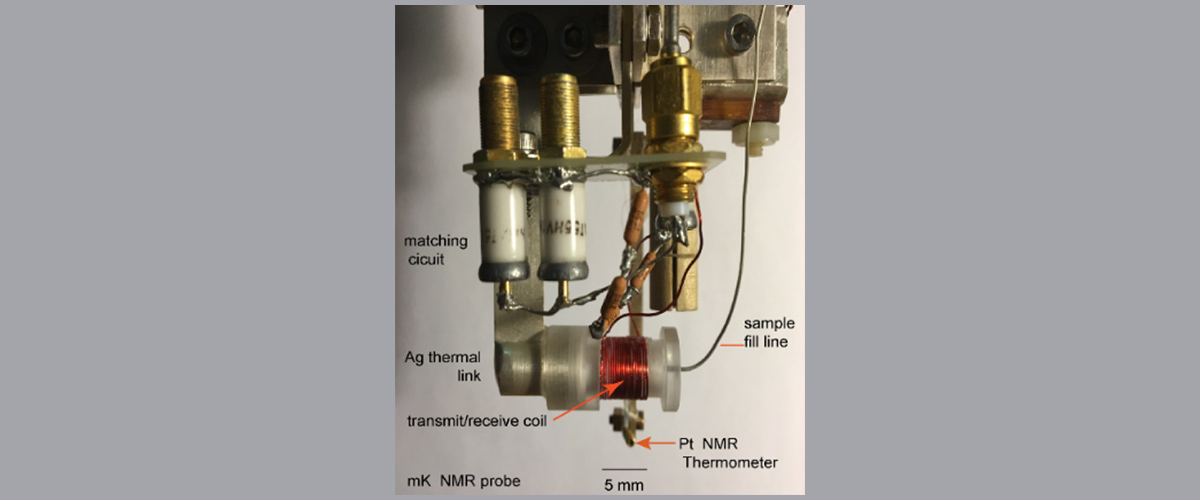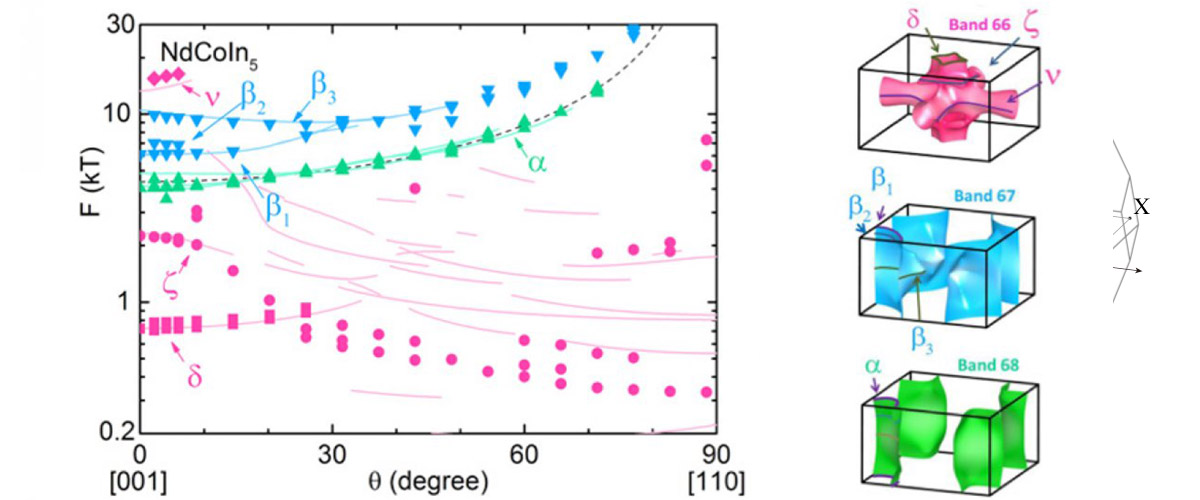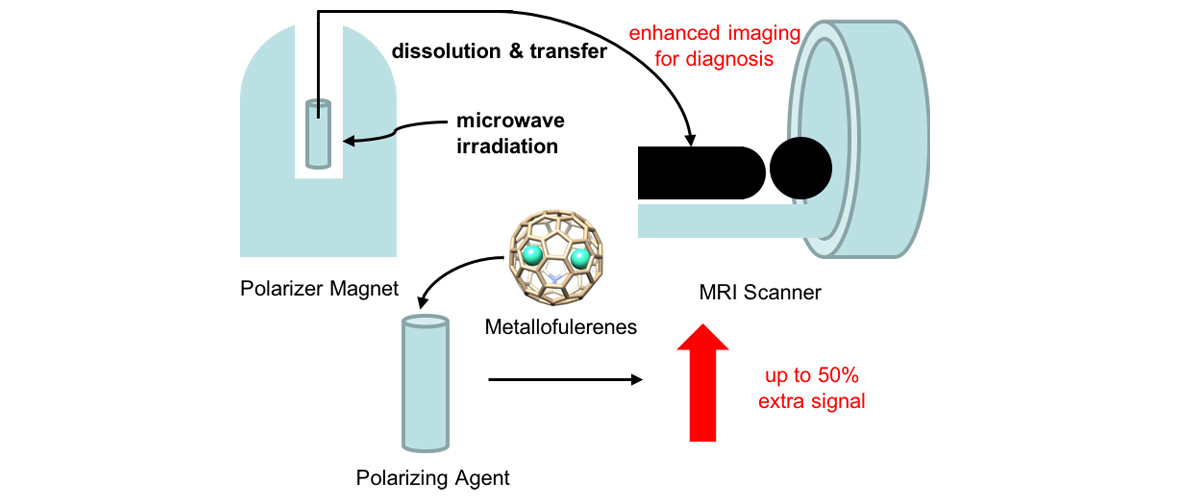What did scientists discover?
Far-infrared measurements performed in high magnetic fields reveal microscopic details of the coupling between the electronic and vibrational degrees of freedom–-so-called vibronic coupling–-in a molecule containing a single magnetic ytterbium (Yb) ion (Figure). It is shown that a relatively small subset of the possible vibrational modes couples strongly to the magnetic moment of the Yb ion.
Why is this important?
This class of magnetic molecules is of interest due to their potential use in next-generation nanoscale information technologies–-both classical and quantum. The molecular vibrations that couple most strongly to the magnetic moment of the Yb ion are the ones that dominate its relaxation, i.e., the loss of information encoded in the magnetic states of the molecule. Armed with this knowledge, chemists can design superior molecules with weaker vibrational coupling to the magnetic moment, enhancing the material's information storage potential.
Who did the research?
J. G. C. Kragskow,1 J. Marbey,2,3 C. D. Buch,4 J. Nehrkorn,2 M. Ozerov,2 S. Piligkos,4 S. Hill,2,3 N. F. Chilton1
1University of Manchester, UK; 2MagLab; 3FSU Physics; 4University of Copenhagen, Denmark
Why did they need the MagLab?
Coupled modes are very difficult to detect without high magnetic fields. The trick to this study is that weak vibronic modes change their energies with magnetic field, while the much stronger pure vibrational modes do not. The weak vibronic modes can be identified via a data processing method that removes field-independent signals. The wider field range available at the MagLab enables identification of many more weak vibronic modes, thus providing information that could not be obtained elsewhere.
Details for scientists
- View or download the expert-level Science Highlight, Vibronic Coupling in a 4f Molecular Magnet Probed by Far-Infrared Magnetospectroscopy
- Read the full-length publication, Analysis of vibronic coupling in a 4f molecular magnet with FIRMS Data Set 1 and Set 2, in Nature Communications
Funding
This research was funded by the following grants: G.S. Boebinger (NSF DMR-1644779); N. F. Chilton (Royal Society and European Research Council, grant # 851504); J. G. C. Kragskow (EPSRC); S. Hill (DOE DE-SC0020260); S. Piligkos (VILLUM FONDEN #13376).
For more information, contact Stephen Hill.






